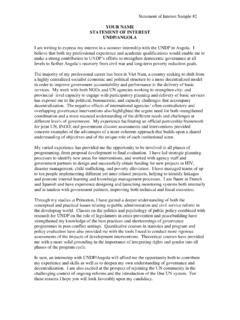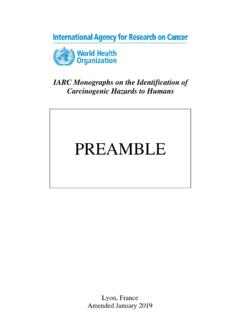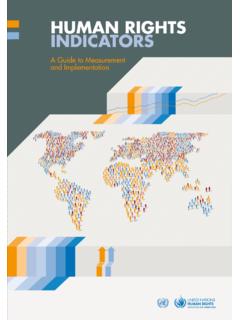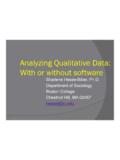Transcription of Guidelines for textbook review and analysis from a gender ...
1 MINISTRY OF. EDUCATION AND. TRAINING. Project "National textbook review and analysis from a gender perspective, including piloting teacher training programmes to incorporate gender Equality issues in line with the Law on gender Equality and the Law on Domestic Violence Prevention and Control" (UN/Government of Viet Nam Joint Programme activity ). Guidelines for textbook review and analysis from a gender perspective Hanoi/Do Son/Geneva, December 2010. Contributors Ministry of Education and Training (MOET). Do Thi Bich Loan (Team Leader). Nguyen Thi Mai Ha Kieu Thi Bich Thuy Nguyen Tri Trinh Thi Ahn Hoa UNESCO Ha Noi Office Heidi Kivek s Elina Nikulainen Le Thi My Dung UNESCO International Bureau of Education (IBE).
2 Dakmara Georgescu (Consultant and coordinator). Jean Bernard (Consultant and editor). 1. Table of Contents 1. Introduction Project context and background Rationale for textbook review and analysis from a gender perspective The Project's expected contribution to revising textbooks in Viet Nam 2. Quality learning, gender mainstreaming and the role of textbooks Quality learning gender mainstreaming in education Sex' and gender '. gender differences gender biases gender equality The role of textbooks in promoting quality learning and gender mainstreaming 3. textbook analysis from a gender perspective: Conceptual and methodological framework Overview of the research methodology and expected outcomes Developing an analytical framework Research methods and instruments Carrying out a text analysis Investigating the perceptions of users, beneficiaries and stakeholders 4.
3 Preparing the process: Outline of the review and analysis of primary education textbooks in Viet Nam 5. Preparing a consolidated report of findings, including recommendations Data collection and processing Interpretation of data 6. Using the research outcomes for advocacy and change Strategies for awareness raising and advocacy Involving stakeholders in processes of education and curriculum change Bibliography Annex 1: List of primary education textbook titles reviewed Annex 2: Glossary Annex 3: Participants in Hoa Binh workshop (July 2009). 2. Executive Summary Textbooks and other learning materials have a key role in shaping the values, attitudes and social skills essential to achieving gender equality, a cornerstone of both the Millennium Development Goals (MDGs) and the goals of Education for All (EFA).
4 Yet, despite efforts to correct disparities in the visibility, status and perceived potential of boys and girls, men and women portrayed in textbooks, such imbalances are common in the materials used in educational systems throughout the world. The present Guidelines are intended to provide a practical, systematic course of action for educational researchers, curriculum developers, policy makers and others seeking to promote gender equality through education in ways that get at the deeper issues embedded in textbooks as well as the more superficial aspects that impede progress toward meaningful reform. From a methodological standpoint, an analytical framework using both quantitative and qualitative instruments is suggested as a combined strategy for uncovering both subtle and more obvious expressions of gender disparities and biases.
5 Having emerged from a comprehensive research study1 conducted by the Ministry of Education and Training of Viet Nam (MOET), in partnership with the UNESCO Ha Noi Office with technical assistance from UNESCO International Bureau of Education (UNESCO IBE), the Guidelines were originally drafted to help shape the process for analyzing primary education textbooks across a spectrum of different learning areas. The study was undertaken within the broader framework of the United Nations/Government of Viet Nam Joint Programme on gender Equality (UN/GOV JPGE) in support of The Law on gender Equality (2006) and the Law on Domestic Violence Prevention and Control' (2007). The main objective of the research project was to inform anticipated processes for curriculum and textbook revision in Viet Nam, with special focus on improving the quality of education from a gender perspective.
6 As the research process on primary education textbooks within Viet Nam reached its final stage in late 2009, the Guidelines were refined and formalized as a set of tools for informing further textbook research agendas, both of different levels and types of learning materials within Viet Nam as well as internationally. Relevant background information on the conceptual underpinnings for carrying out a focused analysis of textbooks and/or other learning materials using gender lenses are included, as are the practical steps for designing, carrying out and sharing the results of the project in ways that precipitate effective action for promoting gender equality on a wider scale. In addition, the Guidelines recommend strategies for immediate awareness raising and training on gender issues among teachers,2.
7 Parents, and communities that have an immediate impact on creating more inclusive, gender sensitive learning environments. 1. For a more detailed description, see UNESCO Ha Noi/UNESCO IBE. 2011. textbook review and analysis from a gender perspective: Report of findings'. 2. See also UNESCO Ha Noi/UNESCO IBE. 2011. Teacher training modules for addressing gender issues and promoting gender Equality' (TTMS). 3. 1. Introduction Project context and background The Project's contribution to revising textbooks in Viet Nam Rationale for textbook review and analysis from a gender perspective Project context and background In the context of the UN/Government of Viet Nam Joint Programme on gender Equality (UN/GOV JPGE) which brought together 12 UN Agencies in Viet Nam for the purpose of coordinating activities promoting gender Equality, the Vietnamese Ministry of Education and Training (MOET)
8 , in partnership with the UNESCO Ha Noi Office launched the Project, National textbook review and analysis from a gender perspective, including piloting teacher-training programmes to incorporate gender Equality issues in line with the Law on gender Equality and the Law on Domestic Violence Prevention and Control' (JPGE. activity ).3 As a first major step, MOET established a Technical Team, as well as a broader Advisory Group, to design and carry out a national textbook study (focusing on primary education textbooks) in 2009 with technical support from the UNESCO International Bureau of The UNESCO and MOET Project targets education as one major domain where gender equality can be enhanced through specific modalities, including textbook revision and new teacher training programmes integrating gender issues and promoting gender equality.
9 The Project explores aspects of the educational system that may hinder gender equality and, therefore, should be addressed in processes of revising textbooks and improving in-service teacher training courses. The Project advocates capitalizing on existing positive experiences, while simultaneously promoting innovative and inclusive practices of providing equitable and fair access to quality education for all through revised textbooks and innovative teacher training programmes. The present Guidelines5 have emerged both as an integral component and a concrete result of the above mentioned study. In their preliminary version, they were developed collaboratively by the implementing partners as procedural tools in the absence of a previously validated model for conducting textbook review and analysis using gender lenses in the Vietnamese education context.
10 Subsequently, following completion of the study, the implementing partners felt it necessary to refine and formalize the Guidelines both as a reflective capacity building tool and as a means of informing future studies anticipated in the coming years (for example on textbooks and other learning materials used at the secondary level). In their present form, these Guidelines are also intended to serve 3. Henceforth in this document referred to as the Project'. 4. Documented in textbook review and analysis from a gender perspective: Report of findings'. (UNESCO Ha Noi, 2011). 5. Henceforth in this document referred to as the Guidelines '. 4. as a generic roadmap for researchers, curriculum development specialists, textbook authors and all education stakeholders in other countries with parallel agendas for promoting gender equality.



